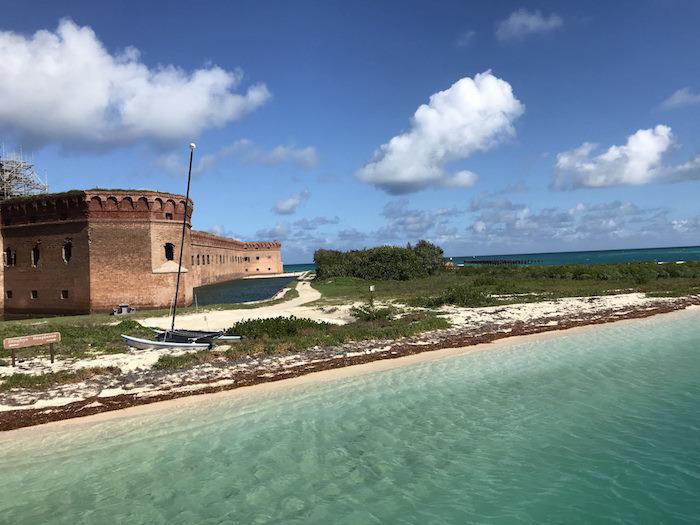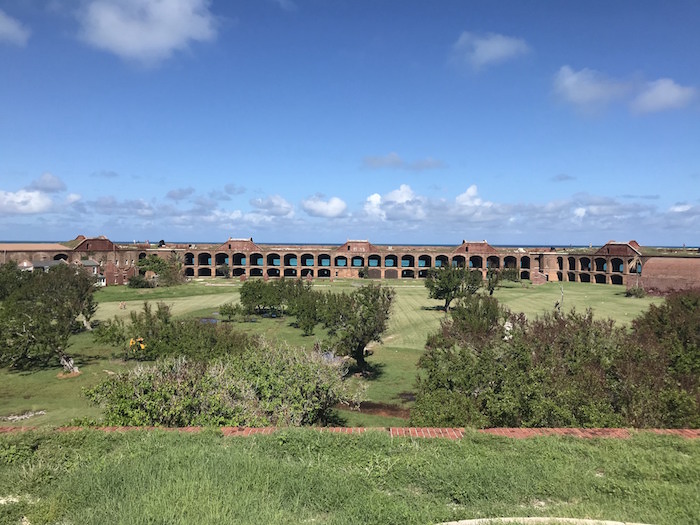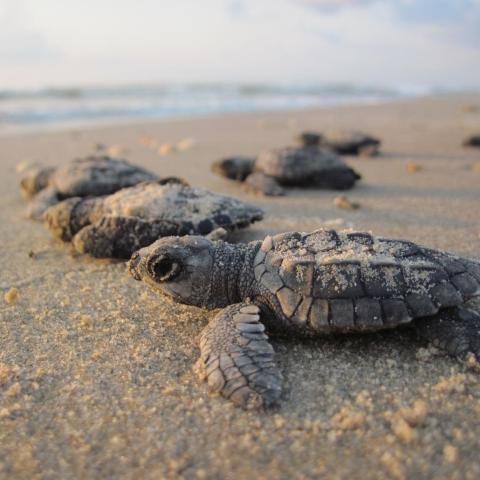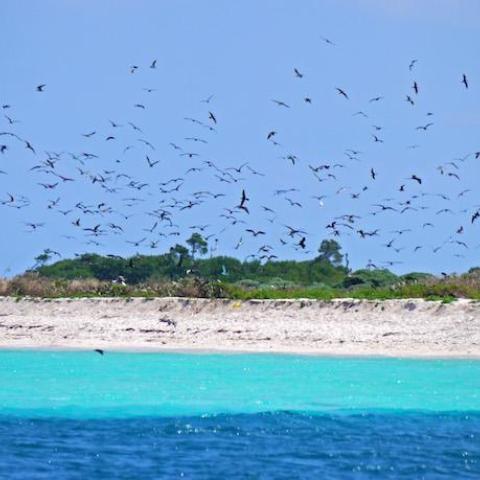Editor's note: The following is advertiser-support content from Traveler's Essential Park Guide, Winter 2017-18.
One of Mother Nature’s most exquisite treasures, the Dry Tortugas and Fort Jefferson, have survived much of her fury over the last two centuries—including Hurricane Irma, which made landfall in Cudjoe Key on September 10, 2017.
Although the powerful storm ravaged much in its path, this historic national park is intact and as beautiful as it ever was. And since October 1, the island’s official ferry, the Yankee Freedom III has been transporting guests to this secluded slice of paradise. Here, the Civil War fortress, Fort Jefferson, which suffered only minor damage to the moat wall, still stands, as robust and grand as it has for more than 230 years.
Located 70 miles west of Key West, Florida, the Dry Tortugas were spared much of the storm’s impact, including being missed by the powerful eye that can wreak havoc on any stretch of land it encounters. All debris from the wind and rain have been cleared and the main dock, ferry dock, water systems, housing and communications systems are up and running, ready to welcome guests.
What You Will See
After sailing in comfort aboard the Yankee Freedom III (and enjoying a delicious breakfast and breathtaking scenery along the way), you’ll step off the boat and onto a pristine white sandy beach, surrounded by crystal blue waters. An impressive sight, the massive Fort Jefferson will astound you—made of 16 million hand-laid bricks, it’s the largest masonry structure in the continental United States.
Before you tour and explore it, grab snorkel gear (provided by the Yankee Freedom) and witness the splendor of the coral reef and all its inhabitants. Snorkeling in warm, shallow waters of the Dry Tortugas is so easy, anyone who can swim is able to navigate and enjoy the reefs. It’s not uncommon for folks to encounter sea turtles, bottlenose dolphins and an array of colorful tropical fish.

Designed during the Civil War to protect the United States from invasions via the Gulf of Mexico, Fort Jefferson never was completed nor saw a cannonball fired in war / Yankee Freedom
The island’s famed wild bird population is a sight to see and the reason that many bird watchers frequent the Tortugas—so keep your eyes to the sky to witness some of the more than 300 different species that migrate in the area. The ruby-throated hummingbird, the yellow billed cuckoo, warblers, flamingos, sooty terns and many other beautiful winged creatures have been spotted in the area.
Tour The Fort
Built between 1846 and 1875, Fort Jefferson was constructed to protect the U.S. gateway to the Gulf of Mexico. A Civil War fortress, more than 2,000 people lived there during its heyday—including civilians, soldiers and prisoners of war. If you take the guided tour, which lasts 45 minutes to about an hour, you’ll learn all about the incredible history of the fort and have a chance to see the cells, the barracks, the gallows and much more. You’ll have the opportunity to step inside the cell of their most infamous prisoner, Samuel Mudd.
Bask In The Sun
The Dry Tortugas are also home to some of the most beautiful beaches you’ll ever see—so whether you’d like to laze in the shade under a palm tree, take a relaxing stroll on the powder-soft sand, or swim in the clear blue waters, your perfect day at the beach is right here. There are four different beach areas on the island, South Swim Beach, Seaplane Beach, Dinghy Beach and North Swim Beach.

Two eras—one of war and another recreation —come together at Dry Tortugas National Park / Yankee Freedom
The Perfect Winter Getaway
Winter is one of the best times of year to visit the Dry Tortugas and Key West, as the water is clear and the temps are typically mild. And because Key West has made a full recovery from Hurricane Irma—the airport is open, as are the city’s bars, restaurants and attractions, it’s as easy as climbing aboard the Yankee Freedom III.
The trip includes breakfast and lunch, snorkel gear, and expert guidance on how to snorkel the reef. The ferry departs from the Key West Ferry Terminal on Grinnell Street in the historic seaport. For those visiting Key West, the Dry Tortugas offers the perfect day trip. Just a scenic ferryride away, this remote oasis in the sea is one of the island’s most popular natural attractions.






 Support Essential Coverage of Essential Places
Support Essential Coverage of Essential Places







Comments
We visited Dry Tortugas National Park and Fort Jefferson on November 30. A interesting visit--well worth the trip!
Hi i have heard a lot of different opinions about the ferry ride to the dry tortugas, i am extremely afraid of water & waves and i get seasick easily. i have read that the ride can be rough. whats your opinion we want to visit the park on May 16 please advice thanks.
Did the trip Sept of 2016. While I love boats I also get seasick easily. I had no problems on the trip. The water was very calm the day of our trip so the ride was very comfortable. you can check the weather ahead of time for the winds and wave heights. The high speed catamarans they use are very stable boats and do not rock like a mono-hull. My wife who is not a boat lover, loved it also and would do it again in a heartbeat. Hope you enjoy the trip.
Be sure to drink plenty of water AND buy and take the dramamine available before departure. Bring ginger candies as well. Please don't be afraid -- it is well worth the trip. We've camped twice and can't wait to go back. It's a special place. Be sure to snorkle. It's amazing.
I really want to try this. But when is the best time to visit -- weather and temperature wise? I'm thinking of September or October or November. Never been to the southeastern states but have heard many horror stories of wicked temperatures and suffocating humidity. Want to try to avoid them.
Any advice will be gratefully received.